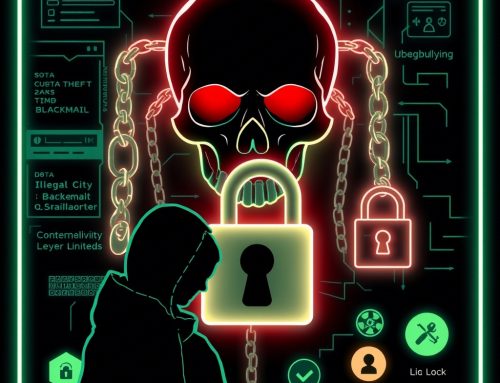The digital world is evolving rapidly, with kids spending more and more time online—from playing games and completing schoolwork to socializing on platforms like social media. While the internet offers incredible opportunities for learning and connection, it also comes with risks. Cyberbullying, hacking, identity theft, and online scams are just a few of the threats our kids face daily.
This is why teaching cybersecurity to kids at an early age is no longer optional—it’s essential. By giving them the right tools, knowledge, and habits, we can ensure they grow up navigating the digital world safely, responsibly, and confidently. Below, we’ll walk you through a step-by-step guide on how to introduce cybersecurity to kids in a way that’s engaging, easy to understand, and effective.
Why Kids Need to Learn Cybersecurity
Before we get into the how, it’s important to understand why cybersecurity education matters so much for children.
- Protecting Personal Information
Kids may not understand the full value of personal information, but it’s something hackers and scammers crave. Teaching children how to safeguard their names, addresses, and other sensitive data can protect them (and your family) from identity theft and financial scams.
- Building Lifelong Skills
The sooner kids learn about staying safe online, the more prepared they will be as they grow up and technology becomes an even more integral part of their lives. Empowering them with cybersecurity skills early on equips them to make informed decisions and take responsibility for their online behavior in the long-term.
- Developing Good Digital Habits
Kids are highly impressionable. By teaching simple safety concepts—like avoiding suspicious links or using strong passwords—you can instill habits they’ll keep for life.
- Preventing Cybercrime Victimization
A strong foundation in cybersecurity can help kids identify and avoid risky situations, making the internet a safer space for them to explore, learn, and enjoy.
Now that we understand the importance, here’s a practical roadmap to help you teach cybersecurity to kids.
Step 1: Introduce the Basics
Begin by explaining what cybersecurity is and why it’s important. This can sound daunting, but simple analogies make all the difference. For instance, explain that just as we lock the doors to our homes to keep strangers out, we also need to “lock” our online activities to protect them from threats like hackers or scammers.
Here’s how to introduce the basics effectively:
- Define cybersecurity as the practice of protecting personal information and online activities.
- Explain who hackers are and the harm they can cause, like stealing personal data or tricking people out of their money.
- Highlight the importance of protecting not only their own data but also that of friends, family, and others in the community.
Step 2: Use Real-Life Scenarios
Children connect better with stories and scenarios they can relate to. Share real-life examples to help them understand the risks and consequences of unsafe online behavior.
For example:
- Show how a phishing scam works by explaining what happens when someone clicks on a suspicious email link.
- Create a scenario where someone falls for a fake website and loses money, and explain how they could avoid such traps by checking URLs and HTTPS certificates.
By using vivid, relatable examples, kids can better grasp the importance of cyber safety.
Step 3: Teach How to Identify Threats
Now, it’s time to focus on recognition. Teach kids how to spot the most common online threats, so they can steer clear of dangers before they escalate.
Some easy-to-digest tips for kids include:
- Don’t trust online strangers, even if they seem friendly.
- Verify the source of emails asking for personal information. Encourage them to ask you or another trusted adult if they’re unsure.
- Check website URLs carefully. Explain how HTTPS and padlock symbols signal secure websites.
- Teach them that suspicious pop-ups are a no-go, and they should never click on random advertisements online.
It’s all about building awareness. The more they can identify threats, the safer they’ll be.
Step 4: Encourage Responsible Online Behaviour
Cybersecurity isn’t just about avoiding threats—it’s also about being a responsible digital citizen.
Encourage kids to:
- Be critical thinkers when reading or seeing something online. Just because something looks real doesn’t mean it is.
- Think about the impact of what they post online, as messages or photos shared now might stay on the internet forever.
- Speak up if they encounter anything suspicious or uncomfortable online. Remind them that it’s okay to ask trusted adults for help when something doesn’t feel right.
Helping them understand the value and consequences of their online actions fosters responsibility and care.
Step 5: Make Cybersecurity Fun
Learning doesn’t have to be boring. There are tons of enjoyable and interactive resources you can use to teach cybersecurity.
- Educational Games
Look for games and apps that teach cybersecurity concepts. Platforms like “Interland” from Google’s ‘Be Internet Awesome’ program offer engaging ways for kids to learn how to stay safe online.
- Creative Activities
Create crossword puzzles or quizzes where kids can practice identifying phishing emails or coming up with strong passwords.
- Role-Playing
Turn learning into a game by role-playing scenarios where they need to outsmart a hacker trying to steal their personal information.
When you turn cybersecurity education into a hands-on experience, it’s more likely to stick.
Step 6: Lead By Example
Kids learn through observation, so it’s crucial to model the online behavior you want them to adopt.
- Use strong passwords for your accounts and explain why you do so.
- Avoid sharing sensitive information online and encourage transparency about your internet use.
- Keep lines of communication open—remind kids they can always ask you questions about cybersecurity.
Your actions, paired with open and honest conversations, will reinforce the importance of good digital habits.
Cybersecurity Skills for a Lifetime
Teaching kids about cybersecurity isn’t just a one-time lesson—it’s an ongoing process that grows with their understanding of the internet and how they use it. By starting with the basics, using relatable scenarios, and creating fun, engaging learning opportunities, you can give kids the tools they need to confidently and safely explore the digital world.
Whether your child is playing online games, messaging friends, or exploring new apps, cybersecurity knowledge will go a long way in empowering them to feel in control of their online lives.
Remember, the skills kids develop now will create habits that last a lifetime, setting them up for a future where they can use technology responsibly and safely.
The digital future is bright—when approached with care and awareness, it’s a place your kids can thrive!





